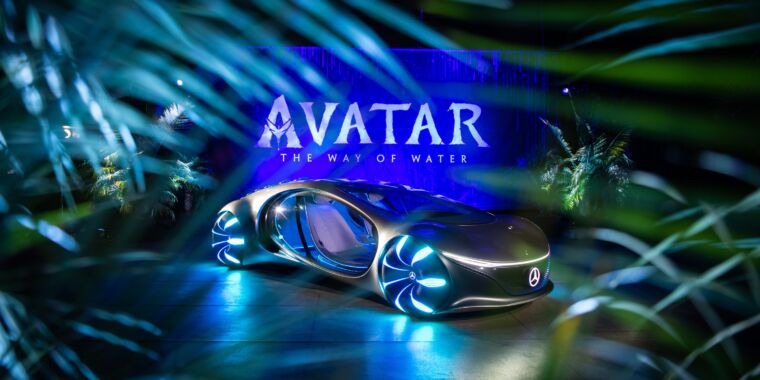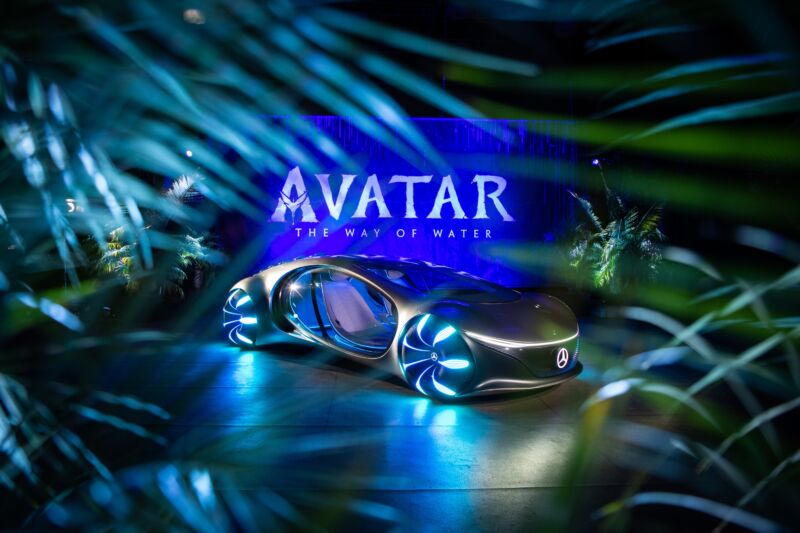
Mercedes-Benz
When you think of the future of transportation, you probably don’t think of water dragons like those in director James Cameron’s newest Avatar movie, Avatar: The Way of Water, which will be released on December 16. You might think of something more along the lines of the Mercedes-AVTR, which Mercedes debuted just before the pandemic at CES in 2020.
The collaboration between the producers and directors of the newest Avatar movie and the automobile company may seem like an unlikely one—after all, there are no cars in the movie, and the Vision AVTR does not appear on-screen. Yet, after spending an afternoon driving this out-of-this-world concept and getting a behind-the-scenes look at the new movie, it makes pretty good sense.
“Avatar as a movie as an IP across all the things we do, has something that a lot of movies don’t have, which is an ethos,” Jon Landau, COO of Lightstorm Entertainment and Academy Award-winning producer of Avatar, said via video conference at the event we attended in Manhattan Beach, California.
“We believe these movies are about something. That they challenge us to look at our world a little bit differently, to understand that our actions have an impact on people around us and the world around us, and we were looking for partners who share in that same type of ethos. And I think Mercedes really has a vision for a sustainable future,” Landau told Ars.
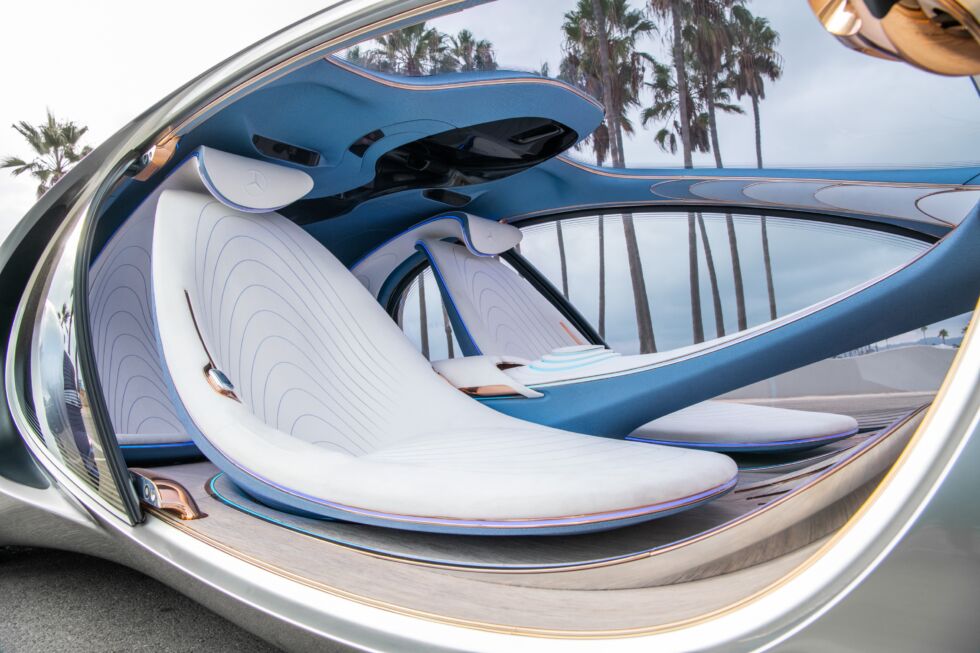
Mercedes-Benz
Sustainable luxury has been the Mercedes buzzword for some time now—ever since the launch of the Mercedes-Benz EQS in 2021. It’s easy to see the through-line between the AVTR and Mercedes EQ line, since designers and engineers were working on both in parallel. As it turns out, the joint project between Cameron’s Avatar movie franchise and Mercedes has yielded a wealth of inspiration and future design direction for the German luxury brand, as well as some things that are already being implemented in real-life vehicles.
A new design of the human-car interface
As a result of COVID, the launch of the Avatar sequel was pushed back, which meant that Mercedes had some time to consider the rolling concept. The company created a cockpit buck—a full-scale model—to show off some of the features of the future that integrate everything from gesture control to the utilization of machine vision to extend the human in the cockpit to the world outside.
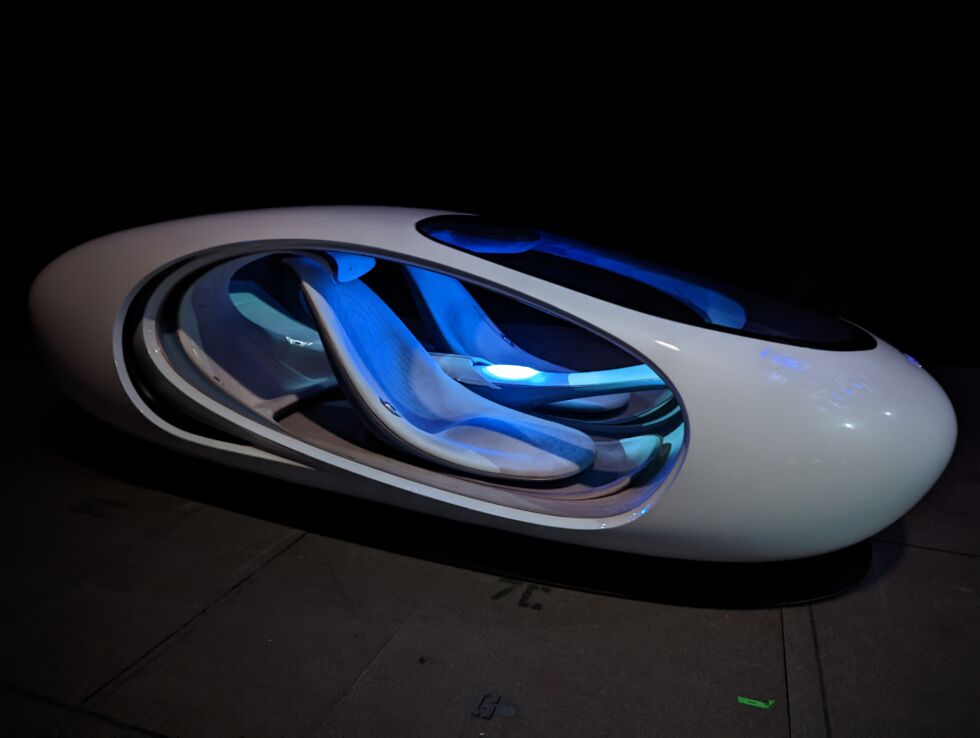
Abigail Bassett
If you know anything about Avatar, you know that the Na’vi people on Pandora connect, via their braids, to the dragons called Banshee that they ride. Similarly, the human in the AVTR concept connects via their heartbeat, using biometrics. While the buck we sat in to learn about the joystick-like steering of the AVTR (more on that below) didn’t have the sensors necessary for biometric feedback, engineers had designed it to simulate a heartbeat and use machine vision to see the human in the seat.
As you walk up to the car, it “wakes up” and seems to almost breathe with you. The pulsating lights seem to breathe or beat with your heart rate, much like your Apple Watch does when it’s sleeping. It gives the machine a lifelike effect and, as Mercedes spokespeople say, makes it feel more like a living, breathing thing than a vehicle. The fins at the rear of the vehicle—which are used both for outward communication (stop, go, turn, accelerate, etc.) and as a modular fluid wing for wind resistance reduction—flutter and move.
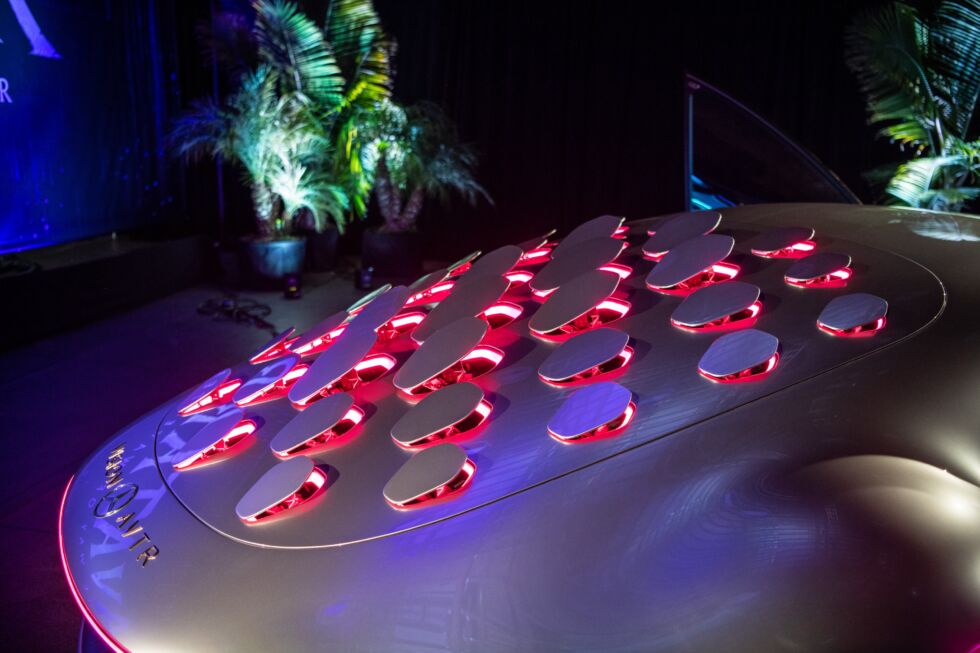
Mercedes-Benz
Each of those scales and their movement were designed in collaboration with a university in Lausanne, Switzerland, that specializes in carbon fiber and organic robots. Apparently, when Mercedes engineers started working on the tiny actuators that move the scales, the movement was too robotic for designers, so they brought in the university. Seeing the scales flutter and move gives the AVTR a completely organic feel, almost like you are approaching an animal and not a machine.
Once you climb in and place your hand on the only control-like interface in the vehicle on the center console, the car starts. The controls look like a stack of breathing stones, and Mercedes calls it Merge Control. It acts as the joystick (there is no steering wheel) for the car, and it’s based on current adaptive technology that allows people with disabilities to drive cars in the real world.
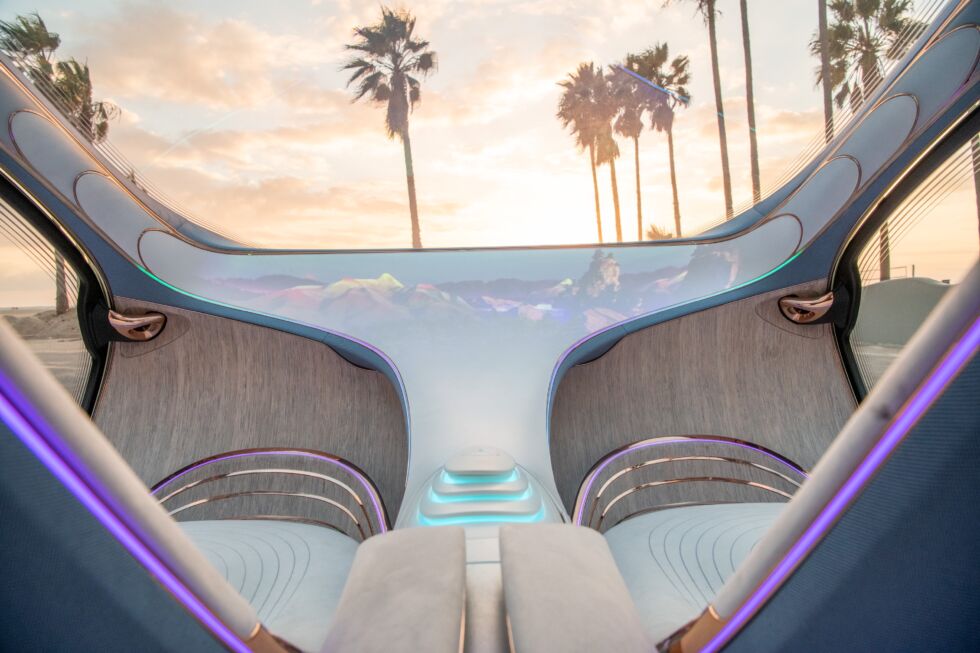
Mercedes-Benz
When the car is on and ready to drive, the screen that stretches like fabric across the front and middle of the vehicle lights up. Since this is a concept created in close partnership with the producers of the Avatar films, the scenes on that screen are those of Pandora, and, in the buck, driving the AVTR is like flying through a video game. The experience is immersive and complete with audio that is targeted for each side of the vehicle to help better connect the occupants with the world outside.
Of course, no concept vehicle would be complete without the addition of gesture control, because there are no buttons anywhere. Raise your inboard hand, and an image is projected on your palm. Move your palm left or right, and you can see the other available icons. To choose an option, you close your hand into a fist like you’re grabbing the icon. In the buck, I changed the scenery we were flying through just by opening and closing my hand. While this may seem like simple projection technology, Mercedes says that it used machine vision to map thousands of different hand colors, shapes, orientations, and sizes to ensure that the feature would work consistently.

